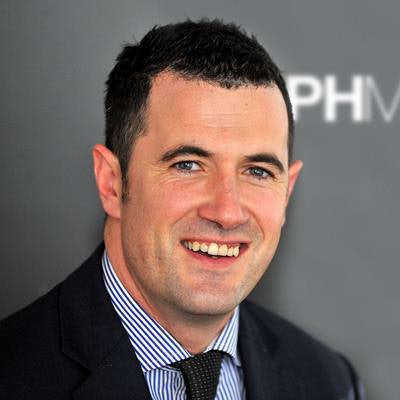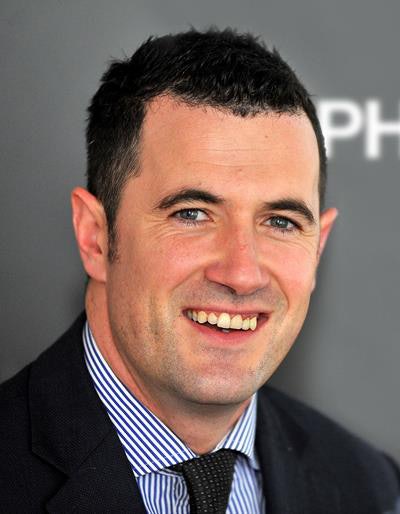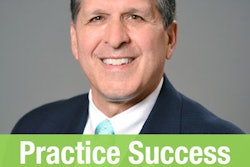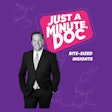
The implications of poor call handling can cost dental practices dearly.
What happens when a prospective or established patient calls your office and is put on hold?
 Mark Williamson is the CEO of PHMG.
Mark Williamson is the CEO of PHMG.Almost 60% of patients would not do repeat business with an organization if their first call was not handled to expectations, according to a survey by PHMG. Those patients are going to another office.
Perhaps an employee answered the phone in an unfriendly manner, or the patient was left waiting on hold with poor-quality music for company. Either way, it could help forge a lasting negative perception of the business.
This represents a huge threat to profitability. For dental practices, the telephone has traditionally been and remains the main source of attracting new patients, so bad call handling can be the difference between attracting new business or putting a customer off permanently.
Training staff represents a good start in establishing a high level of customer service. In the most straightforward sense, this means ensuring all staff provide a consistent, professional telephone service, answering the phone in a polite manner while using an appropriate greeting and giving their name.
Formulating a set of best-practice guidelines helps to enhance the caller experience and also instills a good brand image in the caller's memory.
However, shaping employee behavior isn't the only aspect to consider.
Hold on just a second
"We're very busy at the moment. You are currently in a queue, and your call will be answered as quickly as possible."
“No one wants to be waiting on hold to an uninspiring, automated message.”
These or similar words often invoke frustration from the listener. No one wants to be waiting on hold to an uninspiring, automated message. In an ideal world, dental practices would answer every call immediately, but that isn't always possible. The customer may need to be transferred to another employee who is better-suited to deal with their enquiry, or they might need more information on a service that isn't on hand.
Hold time doesn't have to be problematic, however. The challenge arises when callers are left listening to inappropriate audio, forcing a caller's attention to wander elsewhere and could ultimately cause them to switch off and hang up.
A study by PHMG found that U.S. businesses put callers on hold for an average of 29.83 seconds per call before they reach their intended destination. What's more, 42% of businesses left callers listening to generic music. Amazingly, 34% leave them in silence, while 13% subject listeners to ringing or beeps.
Given that further research has discovered 70% of callers will hang up within 60 seconds if faced with silence, it spells danger for dental practices if no consideration is given to what customers hear when they call the business.
This is where a cost-effective marketing solution can help.
A golden opportunity
Making use of what otherwise would be dead air, on-hold marketing messages extend far beyond a simple request to continue holding. Instead, brand-congruent voice and music are used to communicate directly to an attentive audience while creating a positive caller experience.
It complements the existing values already put in place by the existing visual branding, working to strengthen brand image, as well as offering a first-class customer service. In fact, on-hold marketing has proved to reduce perceive waiting time and also reduce caller hang-ups by 79%.
When businesses put callers on hold for almost 30 seconds, the space created by hold time offers dental professionals a golden advertising opportunity to cross-sell and up-sell their services. The customized messages work as a subtle marketing tool, tapping into customers' subconscious and planting the seed for purchase before they have even spoken to anyone about their requirements.
For example, a customer may call to book a standard checkup only to made aware of other available services while on hold, such as an in-house orthodontist, putting the treatment on the listener's radar and helping to boost inquiries.
By mentioning staff accreditations and qualifications, messaging can reassure customers that they are receiving the best possible care. Expert dental advice also could be broadcast to help strengthen this sense of authority and professionalism, subtly reinforcing the company's positive image among customers.
Going to the dentist is often a terrifying prospect for some people. The messages could reveal how that practice is set up to deal with nervous or scared patients, perhaps explaining the methods they have in place for lessening stress or introducing members of staff as friendly, trustworthy healthcare professionals.
Get the message
First impressions count, and when a potential customer calls a dental practice for the first time, their ears are their only means of making an initial judgment.
In such cases, keeping callers engaged and entertained it is important to avoid call handling impacting negatively on sales and commercial success.
The business benefits are clear. Dental practices would be well-advised to give serious consideration to sounding as good as they look.
Mark Williamson is the CEO of audio branding agency PHMG.
The comments and observations expressed herein do not necessarily reflect the opinions of DrBicuspid.com, nor should they be construed as an endorsement or admonishment of any particular idea, vendor, or organization.



















